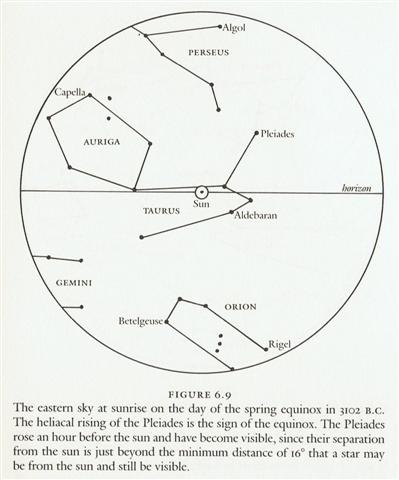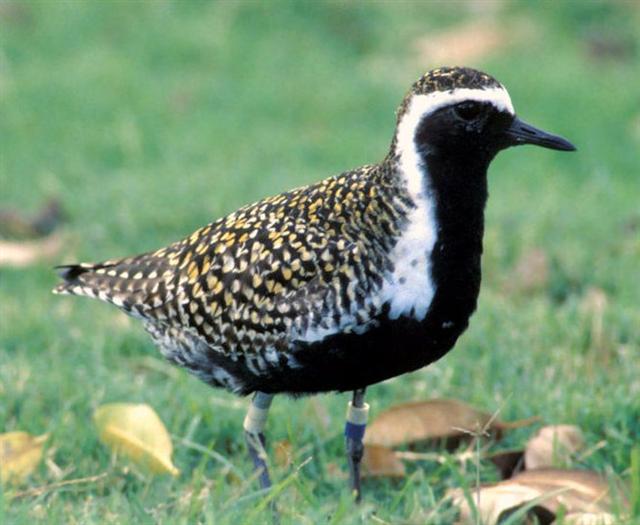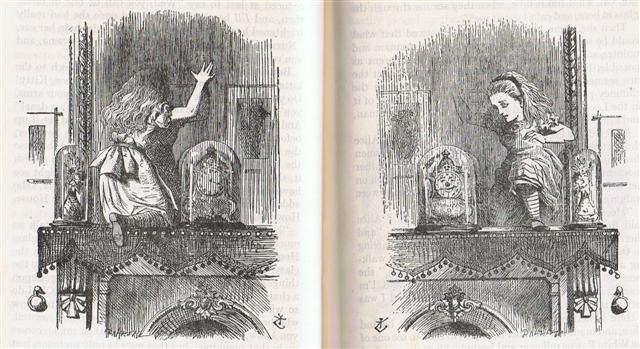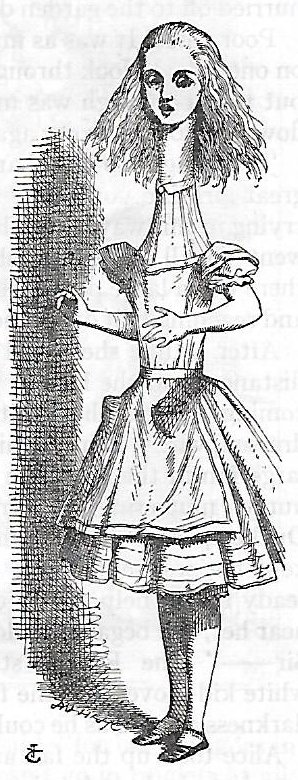|
R (Small
Washington Tablet)
9. This was a prelude. Because my focus should be on the parallel text on the R tablet (which I once upon a very long time ago perceived as worthy to document). With our present mind set now established we can imagine a correspondence between 10 + 6 days in April following day 100 = April 10 and the 10 + 4 glyphs following Ra4-10:
Anciently they waited for the return to visibility of the relevant star, which implied 16 days added to the true heliacal date:
The final glyph in line Ra4 might appear to be no more than a scetch (pepe) of the fully grown man 5 days earlier. We can compare with Ca14-29 at heliacal Polaris:
But a sharp eye can immediately see that the visible arm is not the same. In day 25 of the month of Vaitu Nui (April) the Explorers (the planets) sailed away from Hiva in order to follow the directions given by the dream soul (kuhane) of King Hau Maka and then to find Easter Island (Rapa Nui). Vai. Water, liquid, juice. 1. Vai tagata, semen, sperm (also: takatea). 2. Vai kava, saltwater, sea, ocean. Vanaga. (Sweet) water. Vai-kura = blood. Barthel. 1. Water, liquid, fluid, sap, juice, gravy, fresh water as differing from tai seawater; hakavai to dissolve, to liquefy, to melt. P Pau.: ana-vai, a brook. Mgv.: vai, water. Mq.: vai, water, liquid, juice. Ta.: vai, sweet water, sap, juice. Vaihu (vai-u), milk. T Mq., Ta.: vaiu, milk. Vaipuga (vai-puna), spring water. P Mgv.: vaipuna, water which springs from among stones. Mq.: vaipuna, spring water. Ta.: vaipuna, a spring. Vaitahe (vai-tahe 1), river. 2. Pau.: Vai, to exist. Ta.: vai, to be, to exist. Vaiora, to survive. Sa.: vaiola, the spring 'water of life?' Ma.: waiora, water of life. Vaitoa (vai-toa 2), sugar. Mgv.: vaito, id. Vaituru (vai-turu 1), water conduit. Vaivai, weak. PS Mq.: vaivai, soft, pleasant, agreeable. Sa., To.: vaivai, weak. Pau.: Vaiho, to set down, to place. Ta.: vaiiho, to place. Ma.: waiho, to set down. Pau.: Hakavaivai, to delay. Ta.: vaivai, to rest a bit. Ta.: Vaianu, a plant. Mq.: Vaimata, tears. Ha.: waimaka, id. Vaitahe, a flood. Sa.: vaitafe, a river. Ha.: waikahe, running water, flood. Vaitupu, spring water. To.: vaitubu, well water. Unuvai, to drink water; hipu unuvai, drinking glass. Churchill. Sa., Fakaafo, To., Fu., Niuē, Uvea, Nukuoro, Ta., Rar., Tongareva, Mq., Mgv., Fotuna, Nuguria, Vaté: vai, water. Rapanui: vai, juice, liquid, water. Aniwa: vai, tavai, water. Ma., Ha.: wai, id. Sikayana: wai, wuai, id. Vi.: wai, water. Rotumā: vai, voi, id. Churchill 2.
4 * 23 (at the central glyph Ra4-23) = 92 (→ 2 months after "February 23, 54, 420 - 366, Terminalia):
Ora. 1. Healthy; to recover, to be saved (from an illness or a danger): ku-ora-á, ina kai mate, he recovered, he did not die; ku-ora-á te haoa, the wound has healed; e-ora-no-á, he is still alive; ora-hakaou mai, to come back to life; ora ké, what a pleasant breeze! (lit: how healthy!). 2. Stick for spinning top (made from the shell of a sandalwood nut) with which children make the top spin. Vanaga. 1. December, January. Ora nui, November, October. 2. To live, to exist, to draw breath, to survive, to subsist, to be well, healthy, safe, to refresh, a pause, rest, ease; e ko ora, incurable; ora tuhai, previous existence; ora iho, to resuscitate, to revive; ora nui, vigorous; oraga, life, existence; oraga roaroa, oraga roaroa ke, oraga ina kai mou, immortality; oraga kore, lifeless; oraga mau, oraga ihoiho, vivacious; oraora, oraora no iti, to be better; hakaora, to draw breath, to revive, to strengthen, healthy, to sanctify, to animate, to save, to repose, to cure, to rest, to comfort, to assuag e; hakaora ina kai mou, to immortalize; hakaoratagata, Messiah, Saviour. 3. To give water to; kua ora te kevare, to water a horse; hakaunu ora, to water. 4. To staunch, to stop the flow of a liquid. 5. To make an escape; hakaora, to discharge, to deliver, to set free. 6. To be awake (probably ara); hakaora to guard. 7. A zephyr, light wind; kona ora, a breezy spot; ahau ora, agreeable breeze. Churchill. Ola, life, health, well-being, living, livelihood, means of support, salvation; alive, living; curable, spared, recovered, healed; to live; to spare, save, heal, grant life, survive, thrive. Ola loa, long life, longevity, Ola 'ana, life, existence. Wehewehe. The explorers reach Easter Island in a 'canoe' (vaka). The name of their craft is given as Oraorangaru 'saved from the billows' (Brown 1924:40) or Te Oraora-miro 'the living-wood' (ME:58). The Routledge reference 'Each (man went) on a piece of wood' (RM:278) also seems to refer to the name of the canoe. As far back as 1934, the name was no longer understood. I favor the following explanation: The difficulty in interpreting the name of the canoe of the explorers arises from the name segment oraora. To begin with, the compound form oraora ngaru should be analyzed in comparison with other Polynesian compounds, such as MAO. pare-ngaru 'that which fends off the waves' (i.e., the hull of the boat), TAH. tere-'aru 'that which moves through the waves' (i.e., riding the waves on a board). There are several possible translations for oraora as the reduplication of ora. Te Oraora Miro can be translated as 'the pieces of wood, tightly lashed together' (compare TAH. oraora 'to set close together, to fit parts of a canoe') and be taken to refer to the method of construction of the explorer canoe, while Oraora Ngaru means 'that which parts the water like a wedge', or 'that which saves (one) from the waves, that which is stronger than the waves'. (Barthel 2)
... There is a couple residing in one place named Kui and Fakataka. After the couple stay together for a while Fakataka is pregnant. So they go away because they wish to go to another place - they go. The canoe goes and goes, the wind roars, the sea churns, the canoe sinks. Kui expires while Fakataka swims. Fakataka swims and swims, reaching another land. She goes there and stays on the upraised reef in the freshwater pools on the reef, and there delivers her child, a boy child. She gives him the name Taetagaloa. When the baby is born a golden plover flies over and alights upon the reef. (Kua fanau lā te pepe kae lele mai te tuli oi tū mai i te papa). And so the woman thus names various parts of the child beginning with the name 'the plover' (tuli): neck (tuliulu), elbow (tulilima), knee (tulivae) ...
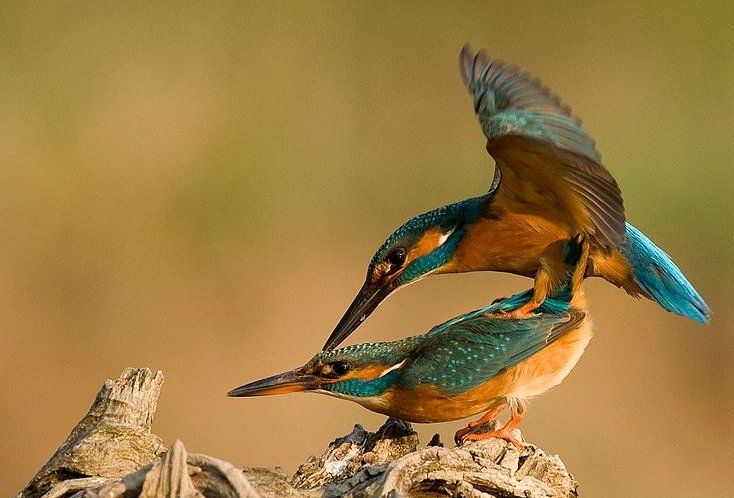 In a Looking Glass (mirror) the directions right and left will be exchanged.
 ... The state of the tree loomed large in their thoughts, because it came about at the same time the head of One Hunaphu was put in the fork. The Xibalbans said among themselves: 'No one is to pick the fruit, nor is anyone to go beneath the tree', they said. They restricted themselves, all of Xibalba held back. It isn't clear which is the head of One Hunaphu; now it's exactly the same as the fruit of the tree. Calabash came to be its name, and much was said about it. A maiden heard about it, and here we shall tell of her arrival. And here is the account of a maiden, the daughter of a lord named Blood Gatherer. And this is when a maiden heard of it, the daughter of a lord. Blood Gatherer is the name of her father, and Blood Moon is the name of the maiden. And when he heard the account of the fruit of the tree, her father retold it. And she was amazed at the account: I'm not acquainted with that tree they talk about. It's fruit is truly sweet! they say, I hear, she said. Next, she went all alone and arrived where the tree stood. It stood at the Place of Ball Game Sacrifice. What? Well! What's the fruit of this tree? Shouldn't this tree bear something sweet? They shouldn't die, they shouldn't be wasted. Should I pick one? said the maiden. And then the bone spoke; it was there in the fork of the tree: Why do you want a mere bone, a round thing in the branches of a tree? said the head of One Hunaphu when it spoke to the maiden. You don't want it, she was told. I do want it, said the maiden. Very well. Stretch out your right hand here, so I can see it, said the bone ... ... Then the big Fish did swallow him, and he had done acts worthy of blame. Had it not been that he (repented and) glorified Allah, He would certainly have remained inside the Fish till the Day of Resurrection. - Qur'an, chapter 37 (As-Saaffat), verse 139–144. But We cast him forth on the naked shore in a state of sickness, And We caused to grow, over him, a spreading plant of the gourd kind. And We sent him (on a mission) to a hundred thousand (men) or more. And they believed; so We permitted them to enjoy (their life) for a while. - Qur'an, chapter 37 (As-Saaffat), verse 145–148 ... 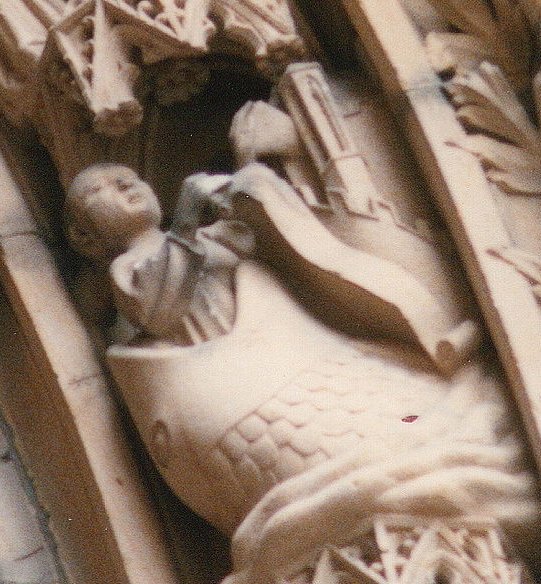 ... The star in between named the Belly of the Fish (ζ, Baten Kaitos, *26) and the twinkling star Mira (ο, *32) - in the flowing hair of the Sea Beast - are also there and properly located ... The four bereaved and searching divinities, the two mothers and their two sons, were joined by a fifth, the moon-god Thoth (who appears sometimes in the form of an ibis-headed scribe, at other times in the form of a baboon), and together they found all of Osiris save his genital member, which had been swallowed by a fish ...
... The directions up and down, on the other hand, are not changing at the equinoxes but instead at the solstices ... 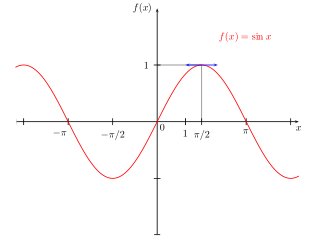 ... 'CURIOUSER and curiouser!' cried Alice (she was so much surprised, that for the moment she quite forgot how to speak good English), 'Now, I'm opening out like the largest telescope that ever was! Good-bye, feet!' (for when she looked down at her feet, they seemed to be almost out of sight, they were getting so far off). 'Oh, my poor little feet, I wonder who will put on shoes and stockings for you now, dears? I'm sure I sha'n't be able! I shall be a great deal too far off to trouble myself about you: you must manage the best way you can - but I must be kind to them', thought Alice, 'or perhaps they wo'n't walk the way I want to go! Let me see, I'll give them a new pair of boots every Christmas ... When the Explorers appeared from the west it might have been because they travelled in the winter (south of the equator the season beginning in May was not summer but winter). It might have been only an illusion, and they may truly have arrived from the east.
... The Taoist philosopher Zhuangzi once had a dream of being a butterfly flying without care about humanity, however when he woke up and realized it was just a dream, he thought to himself 'Was I before a man who dreamt about being a butterfly, or am I now a butterfly who dreams about being a man?' In some old cultures, butterflies also symbolize rebirth into a new life after being inside a cocoon for a period of time ... 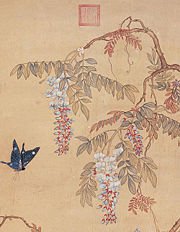
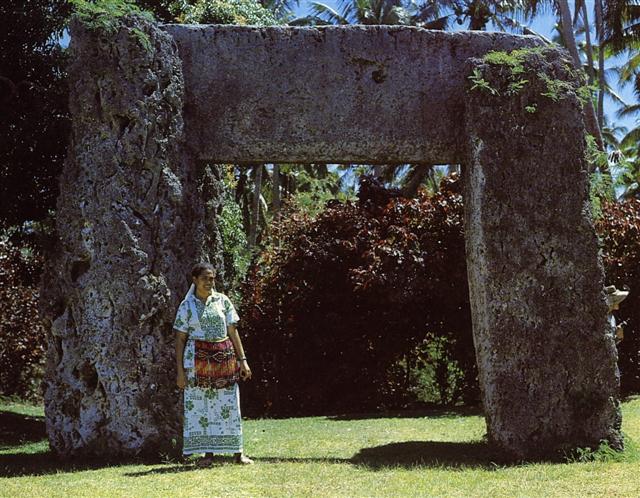
|
|||||||||||||||||||||||||||||||||||||||||||||||||||||||||||||||||||||||||||||||||||||||||||||||||||||||||||||||||||||||||||||||||||||









